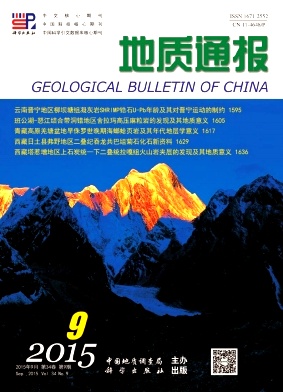HE Xiangli1, ZHANG Xujiao1, HE Zexin1, JIA Liyun1, ZHAO Qiuchen1, FU Lianzhen1, YE Peisheng2. Development features of the Late Quaternary debris flow and their tectonic significance in Langshan area, Inner Mongolia[J]. Geological Bulletin of China, 2015, 34(09): 1735-1748.
| Citation: |
HE Xiangli1, ZHANG Xujiao1, HE Zexin1, JIA Liyun1, ZHAO Qiuchen1, FU Lianzhen1, YE Peisheng2. Development features of the Late Quaternary debris flow and their tectonic significance in Langshan area, Inner Mongolia[J]. Geological Bulletin of China, 2015, 34(09): 1735-1748.
|
Development features of the Late Quaternary debris flow and their tectonic significance in Langshan area, Inner Mongolia
-
1. School of Earth Sciences and Resources,China University of Geosciences, Beijing 100083, China;2. Institute of Geomechanics,Chinese Academy of Geological Sciences, Beijing 100081, China
-
Abstract
The Langshan Mountain of Inner Mongolia is located in the western segment of Yinshan orogenic belt and on the northwestern margin of Ordos Block ring structure belt. Tectonic activities in this region were widely existent, which caused extensive debris flows in the piedmont zone. The study of development features of the Late Quaternary debris flow in Langshan area is very important for understanding the tectonic uplift. The authors investigated debris flow deposition characteristics and landscape features of the Langshan area and found that debris flow sediment particles are coarse, poor sorting and rounding. Their cementation and weathering degree is stronger along with the aging. Piedmont accumulation platforms from old to new are ladder shaped from top to bottom. The authors divided them into 4 sequences. And the Optically Stimulated Luminescence (OSL) dating shows that they were formed respectively at 113.33±12.31ka BP, 65.33±6.71ka BP, 34.67±3.52ka BP, and 5.00±0.57ka BP. Then the authors calculated the average incised rate of the four tectonic active periods in the middle of Langshan Mountain, which is respectively 0.44m/ka, 0.93m/ka, 1.11m/ka and 2.8m/ka. The increase of the incised rate results from the driving of tectonic uplift, which suggests that tectonic uplift of Langshan Mountain may have been in a stage of accelerating uplift since Late Quaternary. The spatial distribution of the incised rate reveals the feature that the uplift rate was from high in the west and low in the east to high in the east and low in the west since 113.33ka in the middle of Langshan Mountain. This study has important significance for the reconstruction of uplift process of Late Quaternary Yinshan orogenic belt and the palaeogeographic pattern of Hetao Basin.
-

-
-
Access History







 DownLoad:
DownLoad: